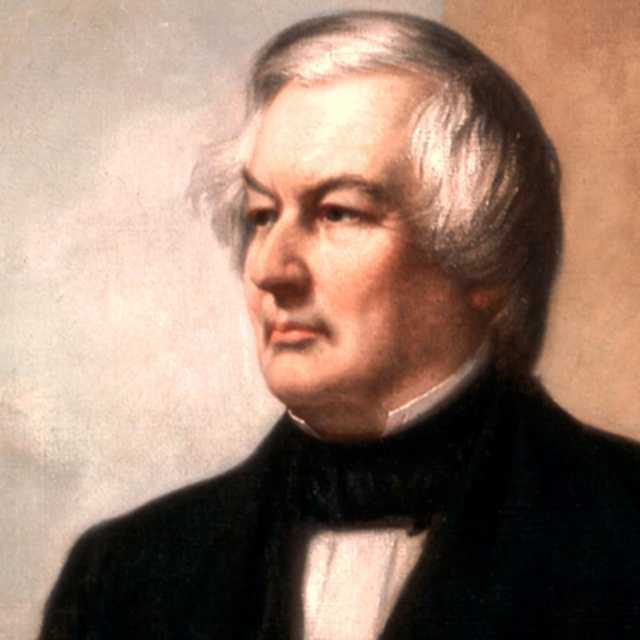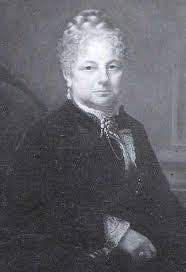The First Act being his youth and political rise, the Second Act being his Presidency…
Millard Fillmore: Lame Duck

Millard Fillmore (1800-74) had been elected Vice President on the Whig Ticket led by General Zachary Taylor in 1848. He did not actively seek the election, but when it was offered, he was honored. Then Zachary Taylor died a year and a half later.
Fillmore was a strapping fellow, boy-to-man, and worked very hard for his education and his admission to the New York Bar. But once an attorney, he preferred elected (or appointed) office to the actual practice of law.
But as President, he made efforts to walk the fine line between “leadership” and gravitating to “popular” politics. Unfortunately for the 1850s, popular politics were so badly divided that actual leadership was perceived as a drawback. Millard Fillmore, being a child of his time and upbringing, was a man of simple principles. He did not like slavery, but…. he believed it was protected by the Constitution, i.e. he couldn’t/wouldn’t do anything about it, hoping it would go away on its own. He believed in the expansion of the country (sea-to-shining-sea), and believed America should be for Americans, i.e. not immigrants, not Catholics, not foreigners…
He was not alone in these sentiments rightly or wrongly. But it did not bode well for his election to a term of his own in 1852. He wanted the Whig nomination, but the fractious party and convention chose General Winfield Scott, who lost.
Third Act, Scene 1
Democrat Franklin Pierce of New Hampshire was elected President. Following the inauguration ceremonies, Abigail Fillmore, the now-ex-President’s wife of more than 25 years, caught cold, which worsened into pneumonia, and she died at the Willard Hotel a week or so later. Whatever plans they made were now cancelled.
Fillmore returned to their home in Buffalo, NY alone. He was the first POTUS who left office with a limited income, no real property and no pension.
A year later, his daughter Mary Abigail, who had helped host White House functions, died of cholera.
Third Act, Scene 2
With vague thoughts of helping rally a crumbling Whig party and possibly becoming its presidential candidate in 1856, he began speaking at locations across the country. He had a fair number of supporters, particularly among nativist organizations, who feared the huge influx of Irish Catholics. While some ex-Whigs (which was never a cohesive political party in the first place) organized the embryonic Republican party, many others formed another party – the American party, specifically in support of their xenophobic attitudes.
Fillmore joined that party (nicknamed the Know-Nothings), but on the advice of political friends, decided to travel abroad for a while, and weigh his options. He spent the better part of fifteen months overseas, and even met Pope Pius IX, once he learned he could avoid kneeling and kissing the Pope’s ring.
In absentia, the American party nominated Fillmore as its Presidential candidate in 1856. The Whigs had dissolved by then. The Republicans fielded their first candidate, John C. Fremont, and the Democrats nominated aging James Buchanan, who had also spent several years abroad. Fillmore campaigned actively, made a decent showing, but lost. His active political days were over.
Act Three, Scene 3

Still plagued with financial instability, he planned to revitalize his law practice, but fate intervened in the form of Mrs. Caroline Carmichael McIntosh (1813-1881), whose first husband had been a railroad owner and businessman. They were childless, and she became a very wealthy widow. They married in 1858, having first agreed to a pre-nuptial contract. This removed his financial strain, and they promptly built a large mansion in Buffalo, NY. It is said that she relished the prestige of being married to a former POTUS.
Unfortunately, within a few years of their marriage, the Second Mrs. Fillmore’s health began to decline, and she showed signs of early dementia. Most sources said she became temperamental and erratic. She changed her will numerous times.
During the Civil War, Fillmore was not a huge fan of President Lincoln (although the Lincolns paid a courtesy call at his mansion en route to Washington). Nevertheless, he supported the Union cause, and became the Commander of the Union Continentals, a militia corps of older men (over 45) formed to guard Upstate New York, in case of Confederate attack. That unit was tasked to guard the Lincoln funeral train en route to Springfield, IL. He remained active in the corps till his death.
Fillmore supported George McClellan in 1864 however, believing him to be best at bringing the country together. He was branded a “copperhead.” He became unpopular again.
But perhaps with time to fill and no monetary worries, he began what could arguably be the best of his efforts: a local legacy of serious value, even today.
He had been one of the founders and a chancellor of the University Buffalo beginning in 1846, and continued the association until his death. He raised funds for its medical school.
He was a founder and large contributor to the Buffalo General Hospital.
He became a founding member and vice president of the Society for the Prevention of Cruelty of Animals and a generous supporter of the Orphans Asylum.
He was a founder of the Buffalo Fine Arts Academy.
He was a founding member and president of the Buffalo Historical Society, and spearheaded the fundraising campaign for Buffalo’s Society of the Natural Sciences.
And perhaps, in memory of his first wife, Abigail Powers Fillmore, who founded their local library a half-century earlier, (and began the White House library as well) Millard Fillmore lay the groundwork for the Grosvenor Library, serving as president of its board of trustees.
He left an estate upward of $250,000 in 1874 money. Likely a couple of million, today. He made several substantial charitable donations. They liked him a lot better again in Buffalo.
Sources:
Collins, Herbert R. and Weaver, David B. – Wills of the U.S. Presidents – Communication Channels, Inc. – 1976
Rayback, Robert J. – Millard Fillmore, Biography of a President – Easton Press (reprint) – 1986
https://buffaloah.com/h/mf/grande/
http://www.thepresidentshalloffame.com/13-millard-fillmore-1850-1853





Reblogged this on Dave Loves History.
Hello, I enjoy your blog so much. However I wonder why I can find any blogs on Presidents John F. Kennedy and onwards? Thank you,
Marcelle Robert O’Bomsawin.
It is a personal choice. I believe that a POTUS/FLOTUS (any history person) needs to be dead for a good 50 years before there can be objective evaluation. Even with stories! In the case of the Kennedys, I believe they need 100 years before the dust settles. JFK will be dead for 60 years (!) soon, and the dust has still not settled.
Reblogged this on Practically Historical.